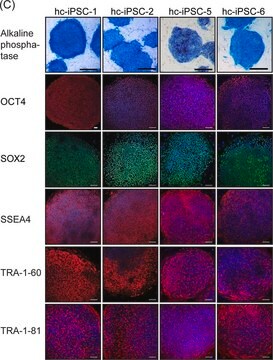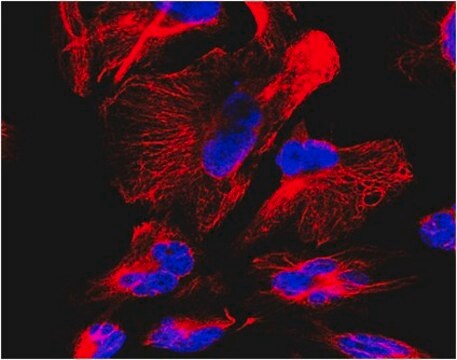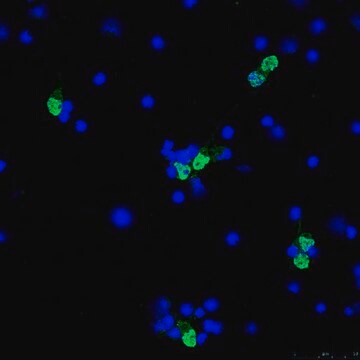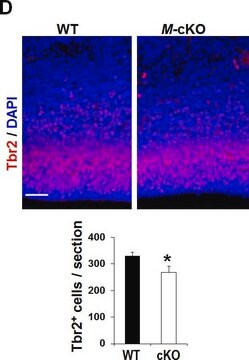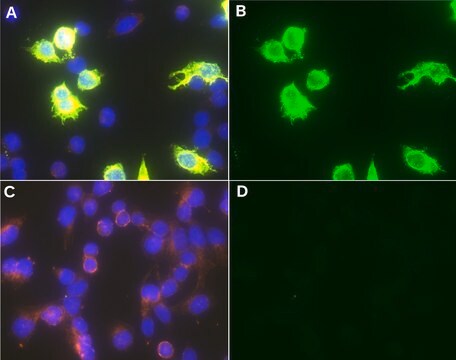FCABS352A4
Milli-Mark® Anti-Nanog-Alexa Fluor 488 Antibody, NT
Milli-Mark®, from rabbit
Sinônimo(s):
Homeobox transcription factor Nanog, Nanog homeobox
About This Item
Produtos recomendados
fonte biológica
rabbit
Nível de qualidade
conjugado
ALEXA FLUOR™ 488
forma do anticorpo
affinity isolated antibody
tipo de produto de anticorpo
primary antibodies
clone
polyclonal
reatividade de espécies
human
reatividade da espécie (prevista por homologia)
mouse (based on 100% sequence homology), rat (based on 100% sequence homology)
fabricante/nome comercial
Milli-Mark®
técnica(s)
flow cytometry: suitable
Isotipo
IgG
nº de adesão NCBI
nº de adesão UniProt
Condições de expedição
wet ice
modificação pós-traducional do alvo
unmodified
Informações sobre genes
human ... NANOG(79923)
Descrição geral
NANOG may be useful in the immunohistochemical diagnosis of tumors. NANOG is expressed in germ cells of the fetus and in some germ cell tumors of the gonads and central nervous system (CNS).
Especificidade
Imunogênio
Aplicação
Stem Cell Research
Pluripotent & Early Differentiation
Qualidade
Descrição-alvo
forma física
Armazenamento e estabilidade
Nota de análise
2102 Ep cells
Informações legais
Exoneração de responsabilidade
Não está encontrando o produto certo?
Experimente o nosso Ferramenta de seleção de produtos.
Código de classe de armazenamento
12 - Non Combustible Liquids
Classe de risco de água (WGK)
WGK 2
Ponto de fulgor (°F)
Not applicable
Ponto de fulgor (°C)
Not applicable
Certificados de análise (COA)
Busque Certificados de análise (COA) digitando o Número do Lote do produto. Os números de lote e remessa podem ser encontrados no rótulo de um produto após a palavra “Lot” ou “Batch”.
Já possui este produto?
Encontre a documentação dos produtos que você adquiriu recentemente na biblioteca de documentos.
Nossa equipe de cientistas tem experiência em todas as áreas de pesquisa, incluindo Life Sciences, ciência de materiais, síntese química, cromatografia, química analítica e muitas outras.
Entre em contato com a assistência técnica